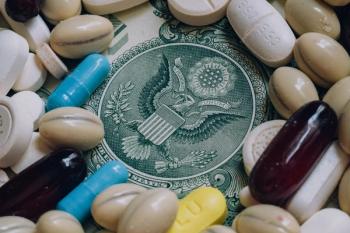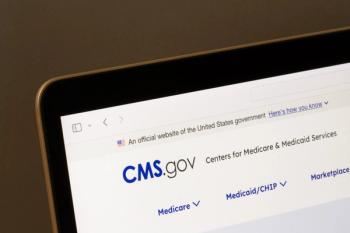
- Drug Topics December 2020
- Volume 164
- Issue 12
2020 Pharmacy Salary Survey Results: Salaries Stabilize as Stress and Job Dissatisfaction Soar
Each year, Drug Topics® surveys pharmacists on important workplace issues—from compensation encompassing salary, wages, and raises to stress levels and overall job satisfaction.
Each year, Drug Topics® surveys pharmacists on important workplace issues—from compensation encompassing salary, wages, and raises to stress levels and overall job satisfaction.
For our 2020 survey, we received 1037 responses from pharmacists. This year undoubtedly posed new challenges for pharmacy amid the coronavirus disease 2019 (COVID-19) pandemic, and our findings underscore the effects.
Compensation
As far as compensation goes, pharmacists are still largely making close to what they made in previous years. Salary versus hourly pay was nearly evenly split between respondents, with 50.4% of pharmacists reporting an annual salary and 49.57% receiving compensation on an hourly basis. In 2020, the majority of pharmacists who responded to the survey reported earning a salary of more than $120,000 or an hourly wage more than $61. The number of pharmacists with salaries in the $100,000 to $130,000 range in 2020 seems to be closely aligned with that from 2019: 38% reported making that amount in 2020, compared with 40% in 2019. However, a total of 39% of pharmacists in 2020 reported earning more than $130,000 per year, compared with 50% in 2019.
Further, 41% said they received additional income in 2020. The highest earners reported an extra $15,000 or more on average, but most respondents reported between $1001 to $5000 in extra income.
In terms of raises, 35% of pharmacists received a raise in 2020; of those individuals, the majority received raises between 1% and 3%. Are pharmacists happy with what they make? That depends. Twenty percent listed income as one of their reasons for considering a job change. The following results on stress and job satisfaction levels hint that these salary ranges may not be enough to offset increasing workloads and frustrations with current workplace challenges.
Stress and Workload
Management pressure, high work volume, endless amounts of paperwork––all of these are part of a pharmacist’s job, which unfortunately often leads to job-related stress. Compounded with the ongoing pandemic and high patient demand, it is no surprise that pharmacists are generally feeling more overwhelmed this year.
Our survey results showed that pharmacists reported higher stress levels and increased workloads in 2020 compared with previous years. Seventy-three percent indicated increased stress levels in 2020 compared with 61% in 2019. Pharmacists cited higher work volume (79%), COVID-19 (67%), and more pressure from management (65%) as the highest stressors.
Another 73% said their workload has increased, up slightly from 70% in 2019, and just 20% reported that their workload has remained the same.
Although COVID-19 has likely exacerbated this trend, high stress and heavier workloads have been steadily affecting the profession for years. Pharmacists are increasingly taking on larger roles in the care of their patients, while also facing additional pressures such as direct and indirect remuneration (DIR) fees and low reimbursements. When asked why their stress levels have increased at work, many pharmacists submitted responses ranging from insufficient staffing support, issues with pharmacy benefit managers (PBMs), and lack of training to the explosive growth of vaccinations.
Job Satisfaction
Although the majority of pharmacists earn at least $120,000 per year, 44% reported being dissatisfied with their current position and 35% are considering a job change as a result.
Overall, 56% selected being either “satisfied,” “very satisfied,” or “extremely satisfied” with their current position. Even though 25.6% reported being “satisfied” with their job, 27% indicated that they were “somewhat dissatisfied.” Moreover, the percentage of pharmacists who said they were “extremely dissatisfied” jumped from 9% in 2019 to 17% in 2020.
Insufficient support, high stress, and the belief that they are not receiving adequate compensation are all factors that roll into low job fulfillment. As anticipated, the added burdens of increased workload volume, inadequate support staff, and frustrations around DIR fees and unfair PBM practices contribute to the likelihood of job dissatisfaction.
Income, job security, and professional advancement were also cited as reasons for looking for a new position.
Methodology and Demographics
The Drug Topics® Annual Pharmacy Salary Survey was available online from October 1 to November 3, 2020.
Overall, 52% respondents were male and 48% were female. The majority (78%) of respondents are employed full time and 13.4% are employed part time.
The charts below show the breakout of respondents by geography, title, and pharmacy setting.
Articles in this issue
almost 5 years ago
Keeping Up With Continuing Education Is a Mustalmost 5 years ago
Addressing Drug Diversion Now Will Yield Dividends in 2021almost 5 years ago
Top Drug Approvals and Product Launches of 2020almost 5 years ago
Nutrition Counseling Tips for Patients With Autoimmune Conditionsalmost 5 years ago
Optimizing Pill Disposal ProgramsNewsletter
Pharmacy practice is always changing. Stay ahead of the curve with the Drug Topics newsletter and get the latest drug information, industry trends, and patient care tips.





















































































































































